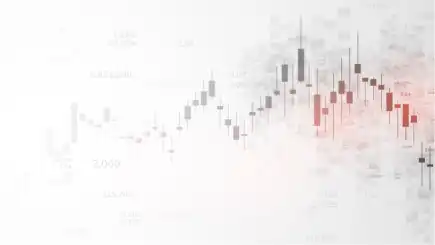Learn macroeconomic forecasting with online courses and programs

What is macroeconomic forecasting?
Macroeconomic forecasting involves using economic data and statistical models to predict future economic conditions and trends. It aims to provide businesses with estimates and projections of key economic indicators, such as GDP growth rates, inflation rates, interest rates, and employment levels. By analyzing historical data, economic indicators, and external factors, macroeconomic forecasting empowers organizations to make data-driven decisions related to production, pricing, investment, hiring, strategic planning, and more. Other key benefits of this practice include mitigating risks and identifying growth opportunities.Footnote 1
Macroeconomic forecasting can be used in various industries. For instance, a retail company may use macroeconomic forecasts to determine consumer spending patterns and adjust its inventory and pricing strategies accordingly. Similarly, financial institutions rely on macroeconomic forecasts to make investment decisions and manage risks. In industries such as manufacturing, energy, and agriculture, macroeconomic forecasting provides valuable insights into supply and demand dynamics as well as resource allocation, enabling businesses to optimize their operations and stay competitive in a rapidly changing economic landscape.
Learn more about the benefits of macroeconomic forecasting with online courses delivered through edX.
Browse online macroeconomic forecasting courses
Macroeconomic forecasting course curriculum
A macroeconomics forecasting course covers a wide range of topics, starting from basic principles, and progressing to advanced concepts and tools. Here are some topics learners might encounter, along with corresponding learning outcomes:
Introduction to macroeconomic forecasting:
Know the importance of macroeconomic forecasting in decision-making.
Learn about different forecasting techniques and their applications.
Time series analysis:
Explore statistical methods for analyzing time series data.
Apply techniques such as trend analysis, smoothing, and decomposition.Footnote 2
Economic indicators:
Study key economic indicators used in macroeconomic forecasting, such as GDP, inflation rates, and unemployment rates.
Understand the relationship between economic indicators and macroeconomic variables.
Econometric modeling:
Practice developing econometric models to forecast macroeconomic variables.
Use statistical software to estimate model parameters and generate forecasts.
Forecast evaluation and validation:
Gain skills in evaluating the accuracy and reliability of macroeconomic forecasts.
Master methods for validating forecasting models.
Macroeconomic scenarios and risk analysis:
Examine techniques for scenario analysis and assessing risks in macroeconomic forecasting.
Look at how to incorporate uncertainties and external shocks in forecasting models.
From macroeconomics forecasting to corporate finance, edX offers courses covering a wide range of subjects. The available options cater to individuals with various learning needs, including accelerated boot camps for quick upskilling, bachelor’s degree programs for comprehensive exploration, master’s degree programs for advanced learners seeking specialization, and executive education courses for professionals who want to broaden their skill while making significant contributions in the workplace.
Find the right learning path for you with edX.
Explore macroeconomic forecasting jobs
Macroeconomic forecasting is useful in several industries. Here are some examples of job roles that rely on macroeconomic forecasting and how it is applied:
Economist: Professionals in this role analyze economic data, trends, and indicators to forecast and predict macroeconomic conditions. They provide insights and recommendations to businesses, government agencies, and organizations to inform decision-making processes.Footnote 3
Financial analyst: Professionals in this role use macroeconomic forecasting to assess the impact of economic factors on investment decisions and portfolio management. They analyze economic trends and indicators to guide investment strategies and evaluate the potential risks and returns associated with different financial assets.Footnote 4
Market research analyst: Professionals in this role utilize macroeconomic forecasting to understand the broader economic environment and its impact on consumer behavior, market trends, and industry growth. They use forecasting models to identify market opportunities, assess market demand, and make strategic recommendations for product development and marketing strategies.Footnote 5
Strategic planner: Professionals in this role incorporate macroeconomic forecasts into their planning processes to identify potential risks, anticipate market trends, and develop long-term strategies for organizations. They assess economic conditions, industry trends, and market forecasts to align business goals with the economic landscape and ensure the organization's competitiveness and sustainability.Footnote 6
Policy analyst: Professionals in this role rely on macroeconomic forecasting to assess the impact of economic policies and regulatory changes on various sectors, industries, and the overall economy. They analyze economic data and forecasts to provide evidence-based recommendations to government agencies and policymakers, helping to shape economic policies and address economic challenges.Footnote 7
Business consultant: Professionals in this role leverage macroeconomic forecasting to provide strategic advice and guidance to businesses. They analyze economic trends and indicators to identify opportunities, assess market risks, and help organizations navigate economic uncertainties. They provide recommendations on business strategies and investment decisions.Footnote 8
Supply chain manager: Professionals in this role use macroeconomic forecasting to help optimize inventory levels, plan production schedules, and manage logistics. By considering economic forecasts, they can anticipate fluctuations in demand, adjust procurement strategies, and ensure the efficient flow of goods and materials throughout the supply chain.Footnote 9
Master the art of macroeconomic forecasting to enhance your decision-making with online courses offered by edX.
